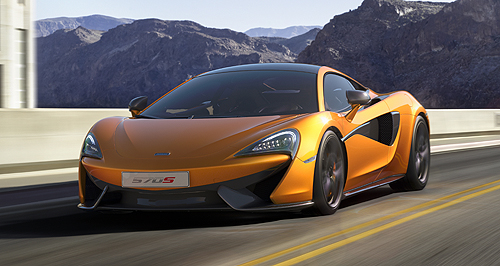Make / Model Search
News - McLarenMcLaren announces partnership with BMW GroupBavarian Brit: The next generation of McLaren combustion engines will contain German DNA thanks to their partnership with BMW Group. BMW to help McLaren develop its next generation of combustion engines1 Feb 2017 MCLAREN Automotive has announced that it will seek the expertise of BMW Group in designing and developing technology for its next generation of combustion powertrains, hoping to deliver a higher power output per capacity, while reducing emissions. The project is partly funded by the United Kingdom government through low-emission development institution, the Advanced Propulsion Centre, which aims to improve development and production capabilities of low CO2 engine technology across the country. The project will be lead by McLaren with the technology destined for use in McLaren engines, but there will be a total of six contributors involved in developing the new engines. McLaren will work with BMW Group and its current engine manufacturing partner, Sussex-based high-performance engine developer Ricardo, while engine casting company Grainger and Worrall will develop a lightweight casting structure for the engine. Composite product manufacturer Lentus Composites will lend their knowledge and expertise, while the University of Bath will be called upon for their research and development capabilities for efficient internal combustion engines. McLaren Automotive CEO Mike Flewitt said the partnership would help McLaren achieve its recently-released business plan that details a model onslaught of 15 new cars or derivatives by 2022. “This is an exciting project that plays to the strengths of all partners,” he said. “We will continue to independently design and build our own engines, and the benefits of this project will help us accelerate the development of our next generation of powertrain, as confirmed in our recently-announced Track22 business plan.” McLaren currently uses a 3.8-litre twin-turbo V8 in its Sports Series and Super Series models, with power outputs ranging from 397kW in the entry-level 540C to 497kW in the exclusive 675LT. A comparable engine from the BMW stable would be the 4.4-litre twin-turbo V8 that sits under the hood of M-badged cars such as the M5, M6, X5 M and X6 M, and pumps out 441kW in the M6 super-coupe. No details have been released of what size or configuration the new engine may take, but hybridisation will be a big focus of the next generation of powertrains, with McLaren saying that of the 15 new models due by 2022, at least 50 per cent will feature hybrid technology. So far the P1 hypercar has been the only McLaren-badged car to feature hybrid technology, but as is the case with other performance manufacturers such as Porsche, hybridisation is to play a greater role in the future of high-performance technology. It is unknown whether McLaren’s enigmatic three-seat successor to the legendary F1, dubbed BP23, will feature either hybrid technology or a BMW-developed engine.  Read more |
Click to shareMcLaren articlesMotor industry news |











Facebook Twitter Instagram